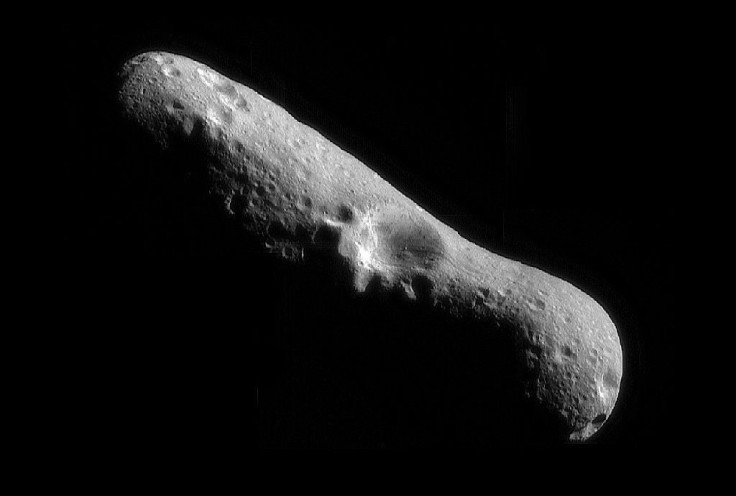NASA's Hubble Captures Stunning Self-Destructing Asteroid With Comet-Like Tails [PHOTO]

NASA's Hubble Space Telescope has captured a small asteroid in the process of self-destructing.
On its official Twitter, NASA released a new image from the Hubble showing asteroid (6478) Gault spinning rapidly and, as a result, ejecting material. The dusty debris it is throwing off while in the process of disintegrating formed two narrow, comet-like tails streaming from the space rock.
According to the NASA website, the tails are the first evidence that the asteroid Gault is beginning to self-destruct since its discovery in 1988. Only 2.5 miles wide (4 kilometers), the small space rock is floating 214 million miles (344 million kilometers) from the Sun.
Check yourself before you wreck yourself! This @NASAHubble image reveals the gradual self-destruction of an asteroid, whose ejected dusty material has formed two comet-like tails. The longer tail stretches more than 500K miles and is roughly 3K miles wide: https://t.co/IXVGlOboze pic.twitter.com/BbFxvtP1yC
— NASA (@NASA) March 30, 2019
Gault is just one of roughly 800,000 known asteroids in the asteroid belt, located between Mars and Jupiter. However, scientists believe that the disintegration of an asteroid such as Gault's self-destruction is a rare event, occurring only about once every year.
Astronomers have been observing Gault coming apart to learn more about what comprises asteroids without having to send a probe to collect material, according to Olivier Hainaut of the European Southern Observatory in Germany, a member of the Gault observing team.
“We didn’t have to go to Gault,” Hainaut said in a statement. “We just had to look at the image of the streamers, and we can see all of the dust grains well-sorted by size. All the large grains (about the size of sand particles) are close to the object and the smallest grains (about the size of flour grains) are the farthest away because they are being pushed fastest by pressure from sunlight.”
Astronomers at the William Herschel Telescope and ESA’s (European Space Agency) Optical Ground Station in La Palma and Tenerife, Spain, and the Himalayan Chandra Telescope in India found that the asteroid Gault rotates once every two hours, a speed so fast that it can no longer hold its surface material.
It is estimated that the amount of debris the Gault ejected so far could make a "dirt ball" that is approximately 500 feet (150 meters) in diameter. The debris tails won't stick around for more than a few months, however, as the material will eventually disperse into space.
The asteroid Gault's destruction is believed to have been caused by the Yarkovsky–O'Keefe–Radzievskii–Paddack effect or YORP effect. This occurs when sunlight, in concert with the small asteroid's asymmetrical shape, speeded up the object's rotation. The small body's surface eventually becomes unstable when the resulting centrifugal force begins to overcome gravity. As a result, the asteroid ejects debris at a rate of a couple of miles per hour, which is the speed of a walking human. It is estimated that Gault's self-destruction started over 100 million years ago.
However, NASA's Hubble wasn't the first to spot the asteroid Gault's tails. On Jan. 5, the University of Hawaiʻi Institute for Astronomy (IfA) Asteroid Terrestrial-Impact Last Alert System (ATLAS) telescopes in Maunaloa and Haleakalā detected the first debris tail. It was also captured by the Panoramic Survey Telescope and Rapid Response System (Pan-STARRS) telescopes in Hawaii in December last year.
The second shorter tail was initially observed by the Isaac Newton Telescope in Spain, the Canada–France–Hawaii Telescope in Hawaii and other observers in the middle of January.
Researchers who analyzed the two comet-like tails estimated that the dust events likely happened between Oct. 28 and Dec. 30, 2018.
© Copyright IBTimes 2025. All rights reserved.





















